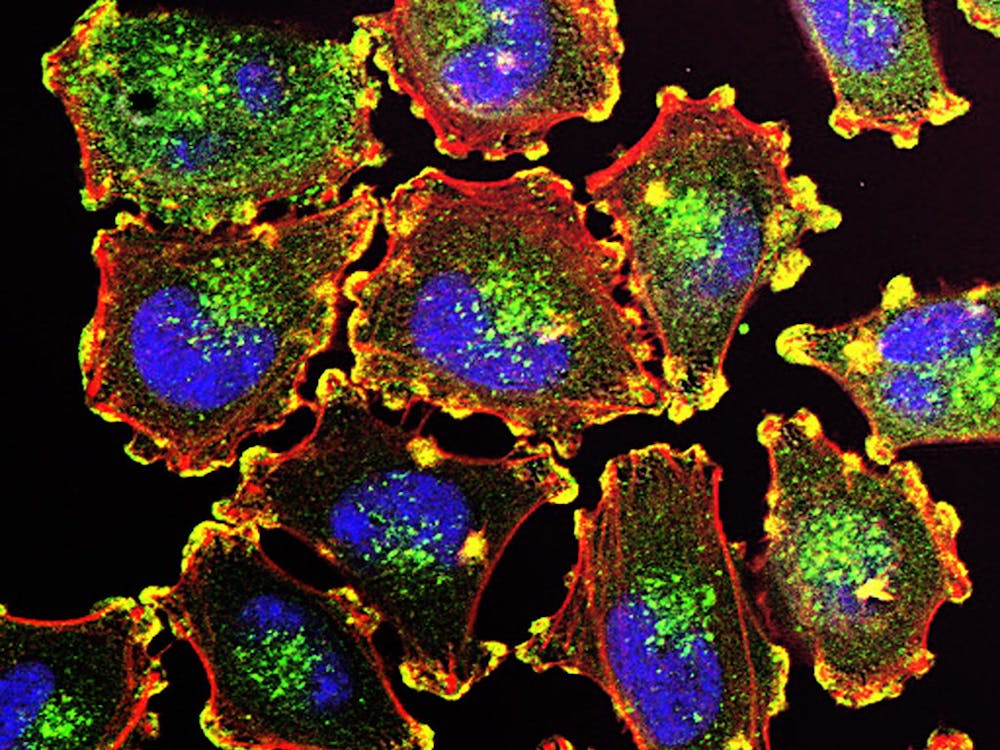In the past few years, the scientific community has been characterized by surges of novel genetic discoveries, and this trend seems to be persisting globally.
This August, scientists in the United States successfully edited a human embryo by removing a mutation that would have caused heart disease. Additionally, just last month, researchers working at the Chinese Academy of Sciences created the first group of genetically modified “low-fat” pigs.
All of these advances in genetics have been achieved through a technique known as CRISPR, which is an acronym that stands for Clustered Regularly Interspaced Short Palindromic Repeats.
CRISPR is a family of DNA sequences commonly found in bacteria that have previously been exposed to viral infection. These sequences help to permanently modify genes.
The spreading of the CRISPR technique can be predominantly traced back to five years ago. At that time, only approximately 150 published papers during the year had the word CRISPR as part of their titles. However, today that number has rapidly increased to somewhere in the thousands.
The scope of CRISPR-based research has also expanded because of the introduction of two new concepts. First, researchers began to manipulate RNA rather than DNA.
In addition, small-scale DNA alterations became feasible and are slowly replacing the massive scope of changes that requires disrupting the entire DNA double helix structure.
These advances were separately announced by researchers at the Broad Institute located in Cambridge, Mass. and the journal Science, respectively.
Despite the lack of a straightforward connection between the two studies, the popularization of these tools have directly impacted the understanding of CRISPR.
Eugene Koonin, a genomics researcher at the National Institutes of Health, is particularly intrigued by the RNA method.
RNA serves as the intermediate communicator between DNA and proteins. If DNA is analogous to a library full of books, RNA would be the person in charge of recording a second copy of the contents in the books to share with others.
As a consequence, although CRISPR generally results in a permanent change in the editing target, any similar manipulations that use RNA would only yield short-term changes.
In other words, the information in the library would not be damaged even if the recorder erases his notes. This is why Koonin believes the RNA method could be used to more effectively to treat temporary conditions such as inflammation.
There are various different types of mutations that can occur with these base pairs, one of which is known as a point mutation in which one pair is swapped out for another.
The most deleterious form of point mutation known to humans, and possibly the majority of other species on this planet, is the transition of a G-C base pair into an A-T base pair.
David Liu, currently a chemistry professor at Harvard University and an author of the Science study, explained why this particular mutation is so harmful.
“This class of mutation, changing G-C to A-T, accounts for about half of the 32,000 known pathogenic point mutations in humans,” Liu said to The Washington Post.
A problem associated with DNA editing is that it would be difficult to alter permanent changes. The RNA tool, in this regard, is useful because of its ability to edit a single base and potentially revert point mutations.
Feng Zhang, a molecular biologist at the biomedical research facility at the Broad Institute and another author of the study published in Science, has worked with his colleagues for many years to investigate mutations in mammalian RNA.
“With RNA, once you stop giving the RNA editing REPAIR system then those changes will be reverted back,” Zhang said to The Washington Post.
Although the future trajectory of CRISPR is still not certain, Zhang believes it has emerged as a field in genetic engineering loaded with many possibilities.























Please note All comments are eligible for publication in The News-Letter.